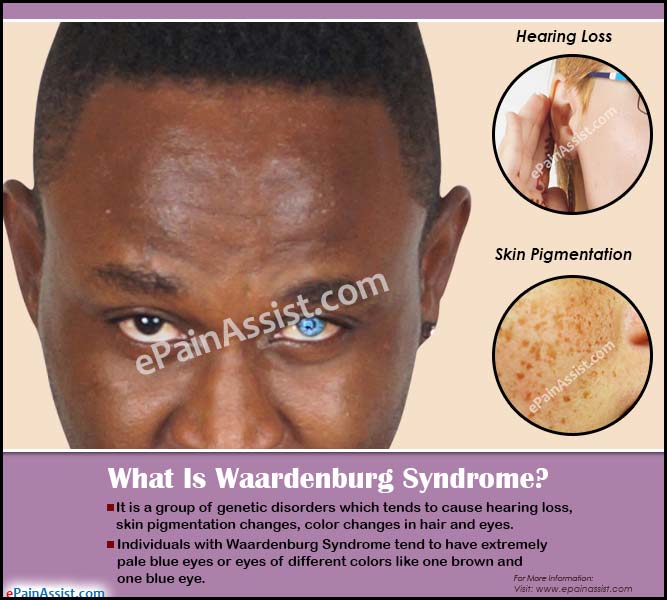What Is Waardenburg Syndrome?
Waardenburg Syndrome is a group of genetic disorders which tends to cause hearing loss, skin pigmentation changes, color changes in hair and eyes. Normally, people affected with Waardenburg Syndrome tend to have normal hearing loss, but there have been cases of hearing loss, either unilaterally or bilaterally which can be moderate to severe. This hearing loss will be observed at birth. Individuals with Waardenburg Syndrome tend to have extremely pale blue eyes or eyes of different colors like one brown and one blue eye. In Waardenburg Syndrome, there is also premature graying of hair. Clinical features of Waardenburg syndrome are variable and may differ from person to person even from the same family.

What Are The Types Of Waardenburg Syndrome?
There are basically four types of Waardenburg Syndrome, type-I, type II, type III, type IV. These four types are differentiated by their physical features.
- Waardenburg Syndrome Types I and II are quite similar and have similar features except that in type-I the eyes tend to be widely spaced whereas in type-II they are not. Additionally, people with type-II form of the disease will have hearing loss than people with type-I.
- Waardenburg Syndrome Type III includes abnormalities of the upper extremities in addition to the hearing loss and pigmentation variations.
- Type IV form of Waardenburg Syndrome has symptoms of both Waardenburg Syndrome as well as Hirschsprung disease which is an intestinal abnormality in which there is blockage of the intestines leading to acute constipation.
What Are The Causes Of Waardenburg Syndrome?
Waardenburg Syndrome as stated is an inherited medical condition. It is an autosomal dominant abnormality which means that only one parent needs to have the defective gene to pass it to the child for the child to develop Waardenburg Syndrome. The type of Waardenburg Syndrome will depend on the different genes which are affected. Majority of the people get this disease from their parents, but their clinical presentations may be significantly different from each other.
What Are The Symptoms Of Waardenburg Syndrome?
Symptoms Of Waardenburg Syndrome Include:
- Constipation
- Loss of hearing
- Different colored eyes
- Pale colored skin
- Premature graying of hairs
- Difficulty with straightening the joints
- Wide set eyes.
How Is Waardenburg Syndrome Diagnosed?
In order to diagnose Waardenburg Syndrome, the treating physician may order the following tests:
- Audiometry testing to look for hearing loss
- Bowel Transit Time
- Colon Biopsy
- Genetic Testing.
What Are Treatments For Waardenburg Syndrome?
As of now, there is no definitive treatment for Waardenburg Syndrome. Treatment is aimed at controlling the symptoms. Constipation is treated with appropriate medications. Hearing is monitored closely with frequent audiometry testing. The overall prognosis of an individual with Waardenburg Syndrome to lead a normal life is good once the hearing problems are rectified. Some of the possible complications of Waardenburg Syndrome are:
- Severe constipation requiring removal of a portion of the large bowel
- Severe hearing loss
- Problems with self esteem with abnormal facial appearance
- In some cases cognitive problems.
Also Read:
- Iliotibial Band Syndrome or Runners Knee: Symptoms, Causes, Treatment
- Ischemic Eyeball Pain or Ocular Ischemic Syndrome (OIS): Types, Symptoms, Treatment, Tests
- Symptoms & Signs Of Complex Regional Pain Syndrome (CRPS) or Reflex Sympathetic Dystrophy (RSD)
- Irritable Bowel Syndrome (IBS): Classification and Types, Pathophysiology, Etiology, Risk Factors, Symptoms, Signs, Treatment, Investigations
- Night Eating Syndrome: Causes, Signs, Symptoms, Treatment, Recovery
- What is Sleeping Beauty Syndrome?
